| Spotlight
DUPS 4th Annual Photography Exhibition, 2010
Clicking Through '71
Habiba Nowrose Happy
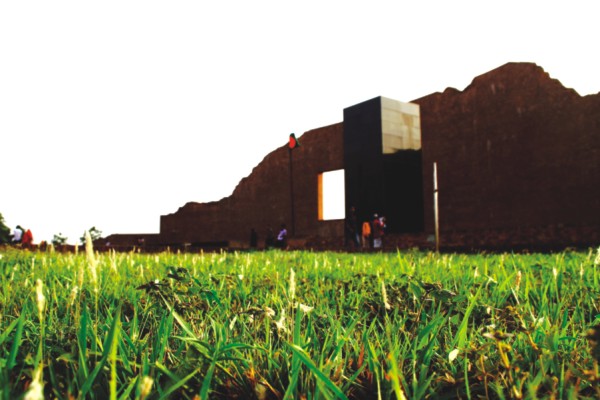
PHOTOGRAPHY is a culturally specific non-verbal means of communication. It is said that a photograph communicates with a thousand words. But the thousand words that a photograph says depends on the photographer and the subject that has been chosen by him or her.
The Liberation War of 19 71is an event of immense national pride and honour. We celebrate it, glorify it and uphold its spirit with passion and emotion so that the future generation can know about how the valiant freedom fighters and political leaders fought in all fronts for the creation of Bangladesh. And yet there is lot more to know and there are a lot of invisible chapters yet to be explored by the youth of today. With an attempt of making those invisible chapters visible to the commoners and youths of today, Dhaka University photographic society has selected 71 as the theme of their 4th annual exhibition.
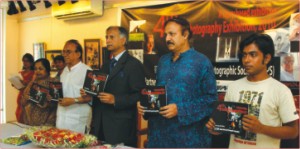 The organisers made sincere attempts to bring those unseen chapters of '71 under the limelight. They picked up 7 chapters of '71 to display in the exhibition in 7 photo stories. The selected 7 issues were: The organisers made sincere attempts to bring those unseen chapters of '71 under the limelight. They picked up 7 chapters of '71 to display in the exhibition in 7 photo stories. The selected 7 issues were:
1. BIRANGONA (War Victim women of ‘71)
2. BADHYABHUMI (Mass killing spots, cemetery).
3. PERCEPTION OF ‘71 (How we see ‘71 today, Cruel birth).
4. RASHID TALUKDER (War Photographer of ‘71).
5. BIRSHRESTHO MOTIUR RAHMAN. Endless Inspiration
6. UNIVERSITY OF DHAKA IN ‘71.
7. SHOBDO SHOINIK (people who worked in Shadhin Bangla Betar Kendro)
Workshop on making photo stories:
As it was the first endeavour of DUPS to do a story based exhibition, the president, secretary and all the members of DUPS sat together to discuss how it could be done so that it could end successfully. Finally, the senior members came to a decision that it would be best if a workshop could be arranged for the photographers. Accordingly, we invited professor of South Asian Institute of Photography, Pathshala D.M. Shibly to take a day-long workshop on how to make photo stories. He showed many of his formal works and personal projects as well so that we could get a clear idea about how a photo story is done. He taught the students about environmental portraits as he thought environmental portraits communicate more effectively when doing a photo story. The workshop proved to be very helpful in assisting us as we got many ideas about making photo stories. It helped us to visualize the stories into single images and de-constructing the large stories into single statements or single perceptions. Such visualisations saved us a lot of time and made us more confident about how we should pursue it.

Pride and Honour:
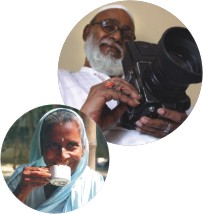 The group that worked to portray “Birangona” named their photo story “Pride and honour”. There was a lot of speculation regarding the war victim women of '71. Father of the Nation Bangabandhu Sheikh Mujibur Rahman tried to restore their lost honour by naming them “Birangona”. Raju Bala the subject we worked on lives in Jhaoil, Shirajgonj. We had to go there to do the photo story on her. We expected to see someone who will be poverty stricken and struggling for a square meal a day. But to our utter amazement we realised that the lives that they were living was quite normal. We found Raju Bala to be a very positive person with full of energy. As our visualisation failed us we decided to focus on the satisfactory life that she was living. Our attempt was to portray the happy and fulfilling life she is living now. It certainly is not the actual condition of every war affected woman of '71 but it is certainly a desired condition that we hope for them. The group that worked to portray “Birangona” named their photo story “Pride and honour”. There was a lot of speculation regarding the war victim women of '71. Father of the Nation Bangabandhu Sheikh Mujibur Rahman tried to restore their lost honour by naming them “Birangona”. Raju Bala the subject we worked on lives in Jhaoil, Shirajgonj. We had to go there to do the photo story on her. We expected to see someone who will be poverty stricken and struggling for a square meal a day. But to our utter amazement we realised that the lives that they were living was quite normal. We found Raju Bala to be a very positive person with full of energy. As our visualisation failed us we decided to focus on the satisfactory life that she was living. Our attempt was to portray the happy and fulfilling life she is living now. It certainly is not the actual condition of every war affected woman of '71 but it is certainly a desired condition that we hope for them.
Cruel Birth:
What we know and feel about liberation today is completely taught. We have learned to celebrate, respect and uphold '71. But there are very few among us who have actually learned to value it. In our personal lives we barely practice any act that will protect the independence which was our most cherished dream.
The phrase “Liberation War of 71” has become a cliché. In our day to day lives it is nothing more than a symbol that invokes certain expected emotions. May be this is why social and moral crime like corruption has so profoundly penetrated our vein. This photo story of this group is called Cruel Birth. The work of this group includes photographs which are abstract in its kind. The text and caption plays a very crucial role in explaining what the photographers want to say.
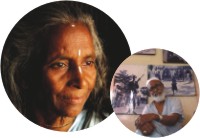 Endless inspiration: Endless inspiration:
Birsreshtho Matiur Rahman is a glorious name among the 7 Birsrehstho in the history of Liberation War. The indomitable passion he showed for the independence of his country is a bright example for the youths of today. Matiur Rahman was posted in West Pakistan to serve Pakistan Air Force. When declaration of the independence of Bangladesh was given, Matiur Rahman felt an extreme desire to join the Liberation War. One day he took hold of a B-13 plane and started to fly towards the Indian border to join war. But in the air his Pakistani trainee-pilot tried to stop him. As they fought inside the plane Matiur lost control and both of them plummeted to the ground meeting their death. This is how Matiur embraced martyrdom on the soil of Pakistan. The passion and love he showed to make his motherland independent is an example worth emulating.
Rashid Talukder:
Rashid Talukder is one of the war photographers of '71 whom the nation remembers with respect. He is a master photographer and a writer of history. He contributed to the pictorial movement of world history by documenting 1971. The photo story on him is a sort of pictorial biography. The awards that he has achieved, his love and dedication for Bangladesh, his spiritual and his personal life are the subjects photographers tried to capture. The most beautiful part of this photo story was captured in one photograph that probably has caught every viewer's attention. It is a picture of Rashid Talukder lying on the flag of Bangladesh just as the way a devoted religious person would lie on his “jainamaz” and wait for the next time of saying prayer. This picture portrayed how patriotism and spirituality go hand in hand. The picture is simply amazing.
Cemetery:
Cemetery is the name of Photo story done in places where mass killing was carried out during 1971. Pakistanis wanted to wipe us out of the world as a nation. At first the assault was made on our language and culture that define us. On the face of violent protest they had to stop dictating how we should speak and how our culture should be. When the war broke out they showed their rage and heinous nature by attacking the ordinary defenseless people of Bangladesh. They indiscriminately killed them; the brutality that they showed in killing defenseless people still remains matchless. The mass killing fields include roads, streets, riverbanks, ponds, and paddy fields. It can be said that Pakistani Army simply wanted to turn our country into a mass grave. The photo story is done on those places where mass killings took place. The pictures are pretty ordinary to look at. But when we come to know the story behind the photos it fills our heart with pain for those defenseless people whose only fault was that they were Bangalis.
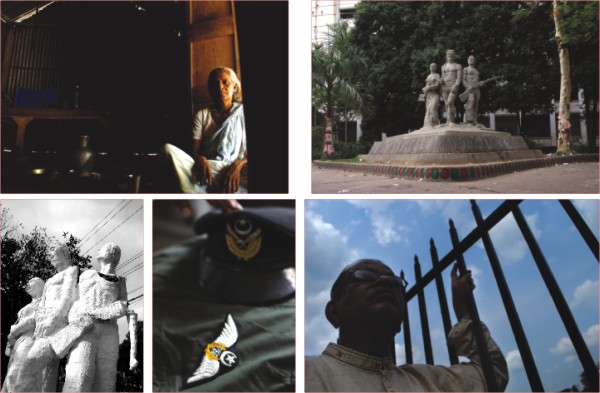
Shabdo Shoinik:
Shadhin Bangla Betar Kendro played an important role in the Liberation War. They played the most important role of broadcasting the inspirational speeches of Bangabandhu Sheikh Mujibur Rahman. When he declared independence it was spread across the country through the radio as it was the only direct means of communication at that period. But it was just a part of the significant contribution that this radio station made at that time. Amidst all odds this radio station kept on playing patriotic songs and inspiring plays. It worked as a tremendous source of inspiration for the freedom fighters. It is a known fact that their contribution cannot be documented after 39 years of independence, but the photographers can document and portray the people who worked at the Shadhin Bangla Beter Kendro. The photo story was done on them. This was the first attempt by any institute to portray and glorify their role during the liberation period.
University of Dhaka in ‘71:
University of Dhaka has been the birth place of many revolutions. The role of Dhaka University has been unique in the Liberation War of ‘71. Meetings and rallies on the DU campus were regular features in 1967, 1968, 1969, 1970 and 1971. There are a number of venues and places where meetings of students used to be held. Many crucial decisions has been taken at those meetings that have become integral parts of the history of the nation. Photo story of this group tried to portray those significant places where many historic meetings were held.
The Inaugural Ceremony:
Dhaka University photographic society arranged a beautiful inaugural ceremony of its 4th Annual Exhibition. It was the first attempt to do photo stories related to the Liberation War of '71.
The chief guest of the inaugural ceremony was the Vice Chancellor of the University of Dhaka Prof. Arefin Siddique, the special guest was M Hamid, two members of Shadhin Bangla Betar Kendro Ashfakur Rahman Khan and Nasrin Ahmed.
The inaugural ceremony was hosted by Sifat Amin and Shurashish Ronjon. The guests were greeted with flower bouquets and each of them were honoured with crests from Dhaka University photographic society. The greeting speech was given by the secretary of DUPS Mahatabul Alam. He cordially thanked everyone for being in the ceremony and greeted every photographer for their success.
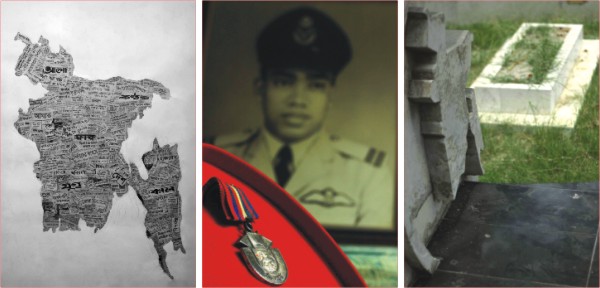
Photography:
Expression of Patriotism
M S Hasan
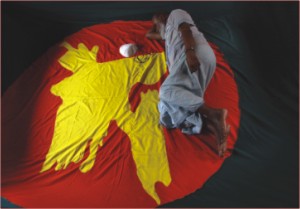 PHOTOGRAPHY, the art of producing the image of an object, is a combination of vision, imagination and control of light. Now a days it has become a unique language all over the world to express one's thought in an artistic way. As a student of Dhaka University I am involved with several co-curricular activities. Dhaka University Photographic Society is one of the organisations that provide support to explore the talents for creative performance. PHOTOGRAPHY, the art of producing the image of an object, is a combination of vision, imagination and control of light. Now a days it has become a unique language all over the world to express one's thought in an artistic way. As a student of Dhaka University I am involved with several co-curricular activities. Dhaka University Photographic Society is one of the organisations that provide support to explore the talents for creative performance.
Dhaka University Photographic Society (DUPS) has been trying to create a strong platform since 1999 for the students who are interested in photography. Now DUPS is being considered as one of most potential and influential voluntary photography organisations in our country. 'Look through the lens' is the slogan of DUPS. The organisation arranged the first intra-university photography contest followed by an exhibition at National Art Gallery of Shilpakala Academy at the end of last year. Having participated in the exhibition, I started to be involved with the organisation more and more. DUPS arranges basic photography courses three times a year. It has already completed 19 basic courses with a true vision of broadening the photography skills and knowledge. It also arranges regular workshops and seminars on photography. The members of DUPS often arrange photography tours to different locations of Bangladesh.
According to Richard Aldington, “Patriotism is a lively sense of collective responsibility”. This time members of DUPS have recognised their responsibilities in a photographic way. They selected 'Liberation War of 1971' as a common theme for all participants in the 4th annual exhibition held at Drik gallery from 28 -31 May. A total of 65 photographs by 18 photographers were finally selected by the authority for the exhibition. The fourth annual exhibition of DUPS consisted of seven photo stories of seven groups.
'Pride and Honour', a photo-story based on a woman violated in 1971, was compiled jointly by Avijit Nandy and Habiba Nowrose. According to Nandy and Habiba, “When we hear the words ‘War Victim women of 71’, it feels as if they are being tortured since ‘71 till today. The title “Birangona” also attributes to this meaning, though we strongly believe that the title was given to regain the lost honour of the tortured women of ‘71.”
The heading of the second story was 'Dhaka University: During 1971' and it was compiled jointly by Shuvashish Sarker, Rumana Amin and Imrul Huda. It is in this premises where our flag was ascended for the first time by the student leaders in front of the arts faculty building. DUCSU museum has preserved some of the memories from Liberation War and other incidents where the voice of the students rose against all tyranny and oppression.
The third story 'Cemetery' was compiled jointly by Nadia Afroz, Moshiur Rahman and Sharif Mustaque. During the Liberation War hundreds and thousands of people were killed at various slaughter grounds. At first helpless Bangladeshis were shot and then were charged by bayonets. Some photographs of these memorial-killing fields were shown in the story.
The next photo-story 'Rashid Talukdar' was different from that of other stories. Rashid Talukdar created his art with light and shadow on celluloid for the generations to come. As an influential photographer he received numerous opportunities. But he turned down many of them, as they contradicted with his belief. This renowned artiste of our country has been victimized nearly 200 times. From the mass revolution of 1969 to general election, its result, non-cooperation movement, Liberation War of 1971, sufferings of war affected people, feminist movement, he documented all these with great dedication. This story was compiled by Dipankar Dipu and Probal Goshwami.
Next photo story 'The ever-lasting inspiration' was based on our all time pride ‘Birshrestho Matiur Rahman' and it was jointly compiled by Rubaiyat Ahsan and Rakibul Hasan. To honour his bravery, patriotism and sacrifice, he was honoured as “Birshrestho” on 15th December, 1973. The people of independent Bangladesh still remember him with due respect.
'Cruel Freedom',the photo-story compiled by Pantha Rahman and Takmila Faiza, added a new dimension in the field of story based photography. This part of the exhibition was quite challenging and of course a praiseworthy step in showing our failure in responding to the expectation of those people who sacrificed their lives for our freedom.

According to Pantha and Takmila, “ Our elders had dreamt of an independent nation. From 1947 to 1971 West Pakistan has exploited us at every step of our lives. They have used our resources that belonged to the people of East Pakistan. They tried to uproot our very cultural identity. On the face of violent protest they were forced to recognize a community with different cultural identity.
The indomitable spirit of our ancestors brought the victory to the countrymen. Their courage, integrity, valiant struggle of 9 months brought us the most cherished independence that we wanted for so long.
Today we are doing the same things - that we wanted to be free from. Now we have become the victims of structural violence and exploitation. We are also part of a system that only exploits the weak and protects the strong. The system serves the interest of the Bourgeois and keeps them behind the scene. All the resources of the country belong to the commoners but as individuals we hardly get the fullest opportunity to health, education, food and shelter.
The exhibition ended with recognition-crest giving ceremony to inspire the young patriots of University of Dhaka. 'These young patriots will continue their journey in search of the true history of our Liberation War through their weapons - a 'CAMERA'” said the chief guest of the closing ceremony Professor Dr. Anwarul Islam. He also distributed the course completion certificate to the students of 19th basic photography course organised by DUPS.
According to George Bernard Shaw,” You'll never have a quiet world till you knock the patriotism out of human race”. I along with all members of Dhaka university Photographic society have been trying our best to recognise our potentials in expression of patriotism using our third eye. This exhibition will certainly be remembered as a contribution of young patriots.
(The writer is a student of Department of Finance, University Of Dhaka.)
Photos by : Avijit Nandi, Habiba Nowrose, Shuvashish Ranjan Sarker, Imrul Huda, Rumana Amin, Nadia Afroz, AKM Moshiur Rahman, Sharif Mustaque, Dipankar Dipu, Siddartho Probal Goshwami, Rubaiyat Ahsan Deep, Md. Rakibul Hasan, Pantha Rahman, Takmila Faiza Farid, Mahtab-Ul-Alam, Mohammad Saquib Hasan, M.I.M. Fuad & Ranak Martin
|

